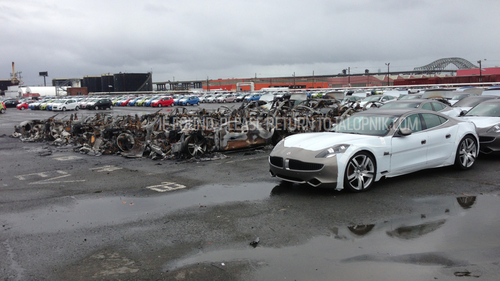
This week, Henrik Fisker announced the formation of a new company, Fisker Inc., which will feature a luxury electric vehicle with a record breaking 400-plus mile electric range. Fisker Inc. will include a battery division called Fisker Nanotech, a partnership with California based scientists and innovators. They intend to use graphene technology to reduce battery recharge time and costs, while extending range and lifespan.
The original Fisker Karma was unveiled in 2008 and production began in 2011. The car certainly was beautiful and seen as a rival at the time to Tesla Motors’ Roadster. The Karma engine was mated with a generator to make it a range extended electric hybrid, otherwise known as a serial hybrid. Meaning, much like Cheverolet’s Volt, the Karma was propelled by an electric drivetrain, but a GM motor would kick in to extend the range. There was also a rooftop solar panel installed that could basically power the accessories within the car, but did not do much in the way of extending the vehicle’s driving range.
Despite winning many awards and garnering a lot of optimism about electric vehicles, the Karma fell victim to a series of unfortunate events. On April 14, 2008, Tesla filed a lawsuit against Fisker, claiming Henrik Fisker stole Tesla’s Model S hybrid technology.
The Karma was also involved in a slew of fire incidents ala the Samsung Note 7. 16 Karmas caught on fire during Hurricane Sandy while they were completely submerged in seawater.

Two other fire incidents involving Karmas are detailed in Wikipedia:
A Fisker Karma was involved in a home fire that also burned two other cars in Fort Bend County, Texas in May 2012. The chief fire investigator said the Karma was the origin of the fire that spread to the house, but the exact cause is still unknown. The plug-in electric car was not plugged in at the time the fire started and it was reported that the Karma’s battery was intact. The carmaker released a public statement saying that there was uncertainty and conflicting reports surrounding the event. Fisker Automotive also stated that the battery pack “does not appear to have been a contributing factor in this incident.”[71] The NHTSA is conducting a field inquiry of the incident, and is working with insurance adjusters and Fisker to determine the fire’s cause.[72]
A second fire incident took place in August 2012 when a Karma caught fire while stopped at a parking lot in Woodside, California.[73][74] According to Fisker engineers, the area of origin for the fire was determined to be outside the engine compartment, as the fire was located at the driver’s side front corner of the car. The evidence suggested that the ignition source was not the lithium-ion battery pack, new technology components or unique exhaust routing.[75] The investigation conducted by Fisker engineers and an independent fire expert concluded that the cause of the fire was a low temperature cooling fan located at the left front of the Karma, forward of the wheel. An internal fault caused the fan to fail, overheat and started a slow-burning fire. Fisker announced a recall to repair the faulty cooling fan unit.[65][76]
In 2013, Fisker’s bad luck continued when guitar hero, Carlos Santana, managed to hit a tree with his Karma after he fell asleep at the wheel. The Fisker Karma’s reputation had been irrevocably tarnished and now these amazing cars can be purchased at highly discounted prices on eBay.
Here’s hoping Fisker Inc. can renew the old rivalry with Tesla and get more people excited about innovative electric cars.














